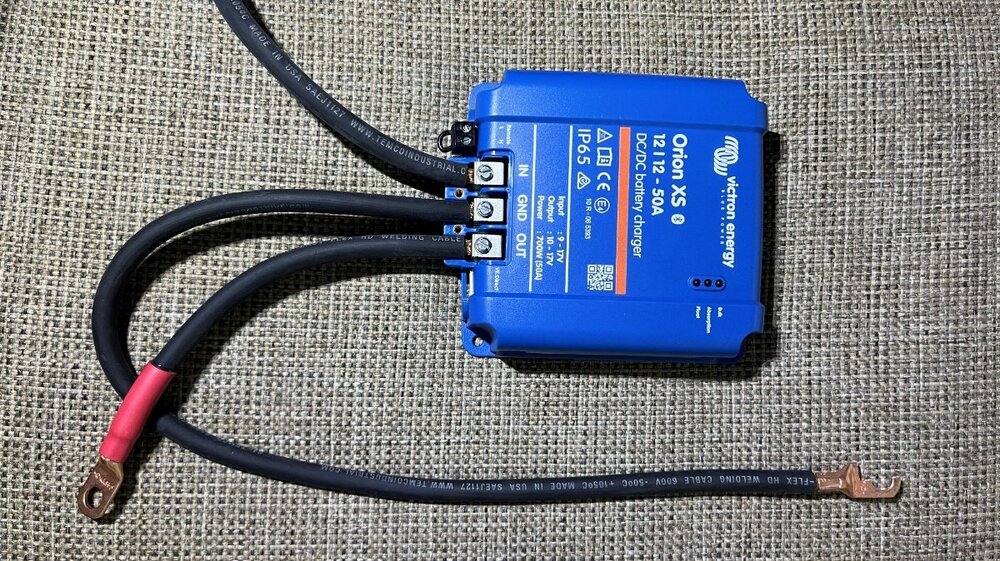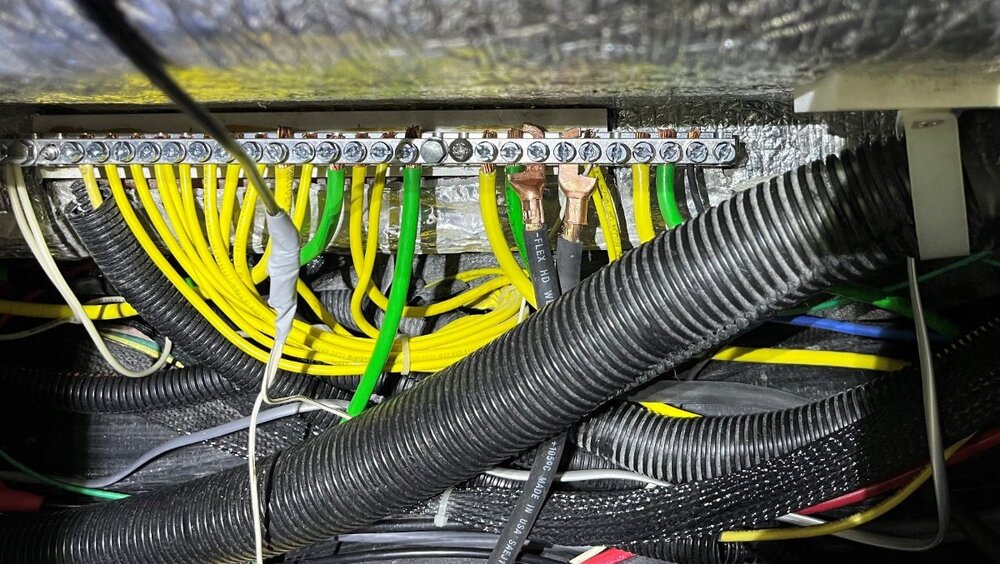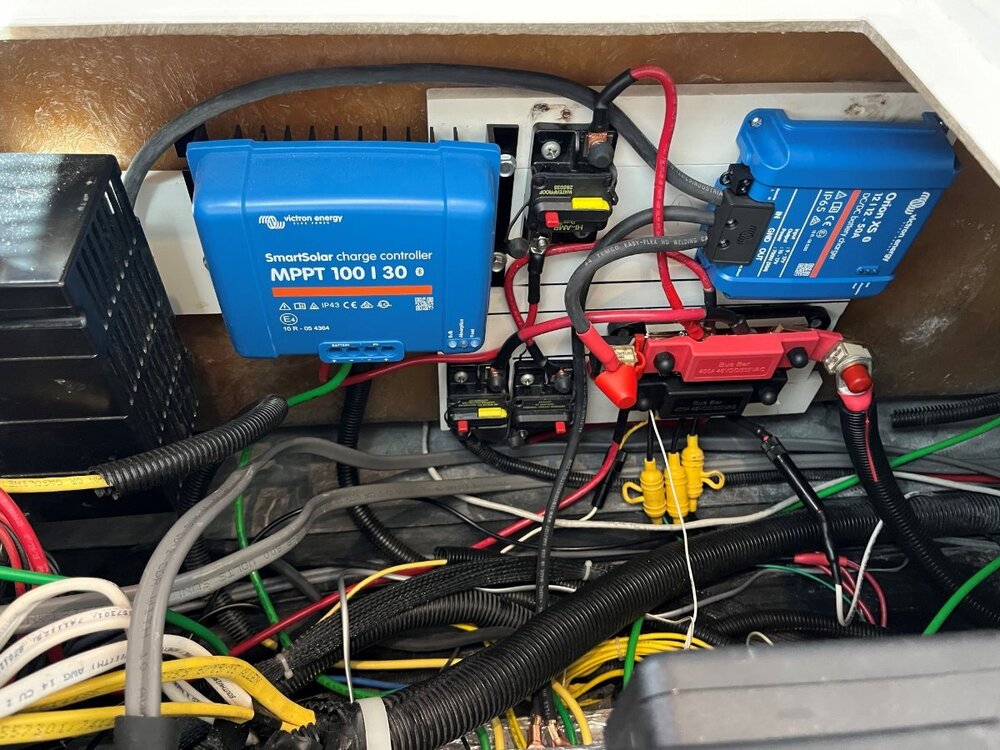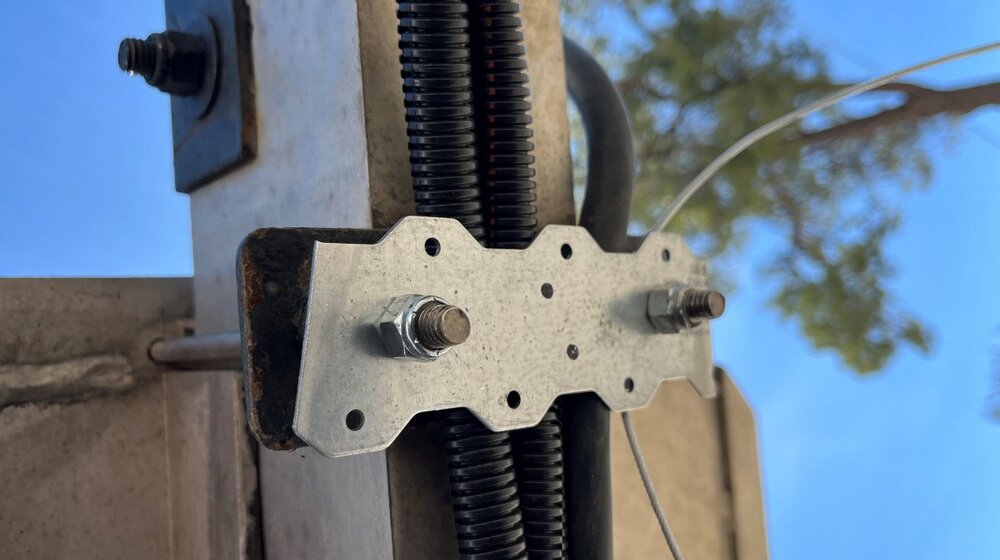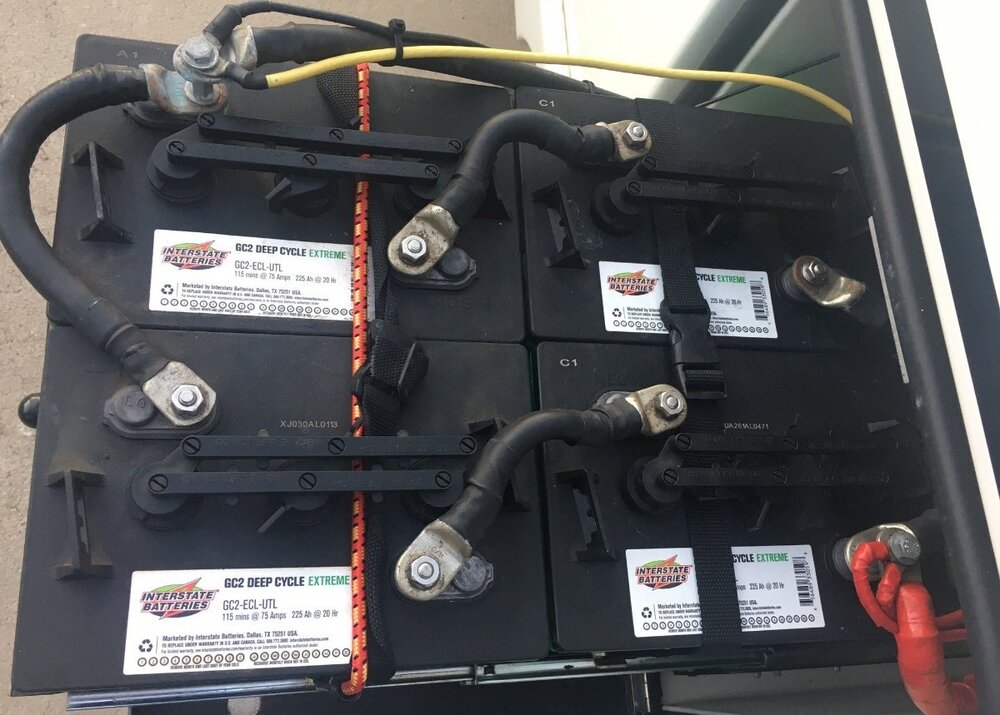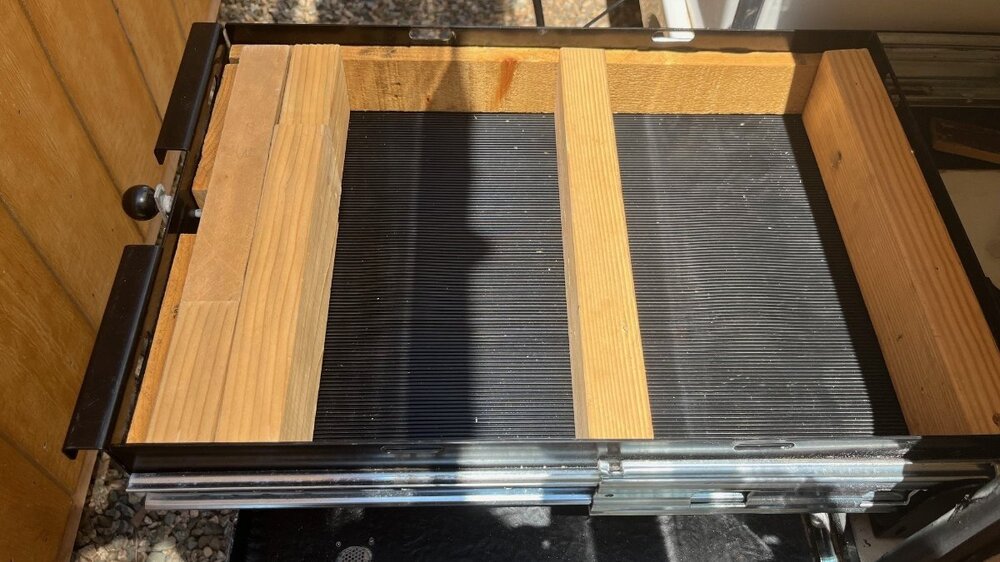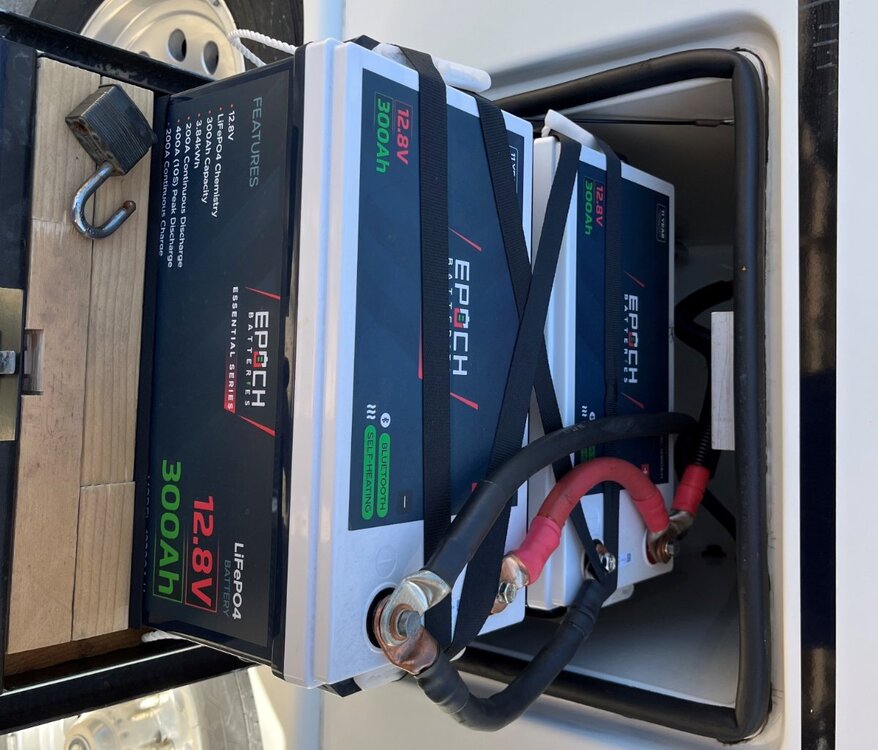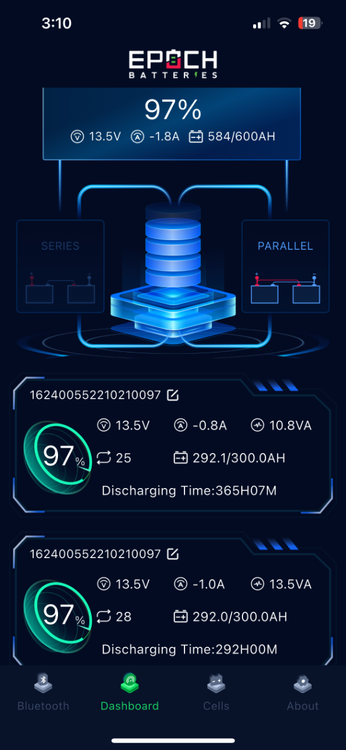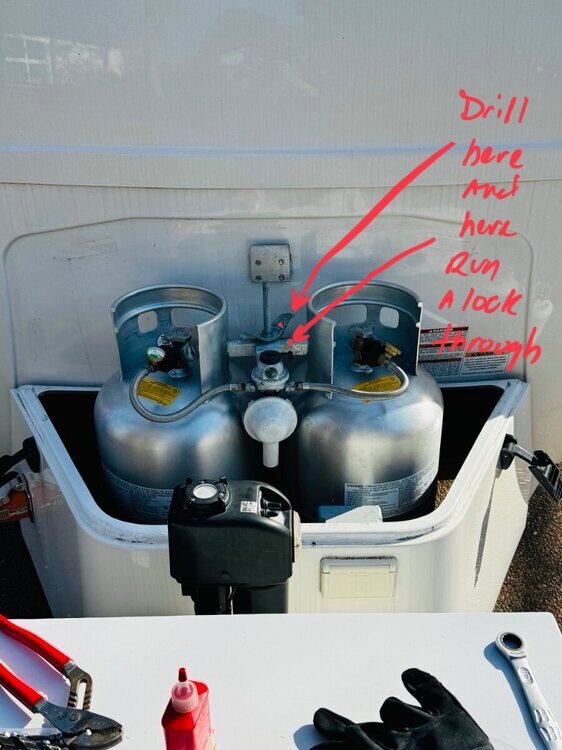Leaderboard
Popular Content
Showing content with the highest reputation since 03/03/2025 in Posts
-
Steve has a reasonable question about why there is any liquid in the fresh tank at all. Best to have no fluids there at all . . . nothing to freeze. About the slow drainage, well yeah, you do have a tiny drain pipe exiting the trailer from the fresh water tank. The tank is many feet long, but only several inches tall. Not a lot of pressure in the line is available from this configuration, resulting in a puny discharge rate when the trailer is perfectly level. To fix this, raise the nose of the trailer as high as possible, thus giving more depth to the column of water and resulting in a higher pressure at the discharge port and a higher flow rate. It will still take a bit of time, but not as bad as a perfectly level unit. As Steve states, opening the drain while driving is a good tactic, but be prepared for all of the folks passing you, honking and pointing to the back of your trailer as the tank empties. Ha! Good luck.9 points
-
Good thought to buy now. This sale will likely repeat, but most often it is 10% OFF. I have worked a complete upgrade of our Oliver to Victron but will keep this simple. Two 300AH Epoch Essentials fit nicely fit (see pic). Only one 460AH will fit so upgrade possibilities are limited. Unless you're ever considering an inverter upgrade to run A/C for a few hours on inverter, you are correct in thinking 460AH is all you need and double the usable AH in what you have presently in lead acid batteries. All you need to do is: 1) Install the new batteries in the battery bay. A cut-off switch is preferred by some who park their Oliver in covered storage. I prefer to not add extra connections. I go without and merely remove the negative battery cable when necessary. 2) You need to reconfigure (software setup) both your Xantrex and Zamp SC for LiFePO4 batteries. This is usually simple yet tedious. There are others here who have done so. I have not owned either product but worked the same for our Victron and Blue Sky chargers. 3) I was not aware that the "460aH V2 battery comes with a nice wired remote state-of-charge display monitor." My Epoch Essentials 300AH batteries did not. I can see battery State-of-Charge (SOC) % and +/- Amp usage in both my Victron and Epoch Bluetooth Apps. I use no displays, so nothing is installed into the walls of our inner hull. Hope this helps! Best wishes, JD9 points
-
Finally got around to switching out our LP tanks for aluminum ones. 17 lbs vs 25 lbs. Supposedly holds 8 gallons of propane. We shall see. Had to make a custom tank mount due to bottom ring being too large for the steel tank mount. Made it out of HDPE 3/4 in bottom and top half with cutouts (9 9/16 in circle) was 1/2 in thick. Slight modification to center rod and large wing nut to secure tanks. Rod I used was 36 in. Needs to be long enough go through frame. Used my hand held router with a Jasper circle jig. Worked great. Very happy with the results. Couple inches to spare height wise with fiberglass shell back on. One of the last vestiges of steel removed from the Oliver. https://flameking.com/product/ysn330-copy/ Pre-purged vacuum ready for filling with propane 12x12x26.5 in 17 lbs 7-8 gallons OPD valve 38 points
-
I assume in 2018 model, your xantrex is the INVERTER only function, and for 12V charging you're using the internal progressive dynamics charger (under the dinette seat). Some folks with the Progressive Dynamics charger see a jumper switch for charging lithium. The issue with that setting is it's not the "best" way to charge lithiums as it's simply a constant 14.6V voltage...not a ramped profile. The WIZ setting is a PROFILE for AGM or LEAD Acid. The LI Setting is just 14.6V (no ramp/no profile). Some battery manufacturers (including Lithionics) won't warrant their battery in presence of the constant 14.6V no profile setting. Whichever battery manufacturer you select, LI Time, Epoch, etc....be sure to check what they need as a charging profile. If a constant 14.6V works for them, then you might be able to a drop in maintaining your existing Inverter and existing charging system. I know that battle born did warranty their batteries with the Progressive Dynamics chargers. Also, there are new "Lithium compatible" plug in boards for progressive dynamics that now offer a lithium profile wizard. So just upgrading the charging board in your Progressive Dynamics energy center is a possibility. In our case (2019 model) we swapped out the Xantrex 2000W Inverter (only) for a newer Xantrex 2000 inverter charger before installing new Lithiums. My full upgrade article is here. This may be too much of an effort for what you want to accomplish. https://4-ever-hitched.com/ggs-blog/f/lithium-battery-upgrade?blogcategory=Electrical+Upgrades7 points
-
Different stokes for different folks.... Some of us like being very close to our camping neighbors and all of the noise, crowd, congestion, only add to the enjoyment and the amenities (i.e. pool, snack bar, miniature golf, etc. are wonderful. While others prefer not being able to see another carbon based life form and believe that nature provides more than any human could ever imagine. Of course, there are also those that are between these two extremes. Our Olivers give us choices and I believe that this is one of the best features of these great campers. Bill7 points
-
Ralph, When we had our 5 leaf pack installed by Lew and his team at Alcan it took them approx 2.5 hrs and the team did a great job. We got there first thing in morning and all of my expectations were ✅ off. It was worth every cent to have it done professionally and done right. We dropped off our Oliver and went and had an excellent breakfast in Grand Junction at Cafe Sol, gotta go hungry! 😋 We actually camped here the night before- https://koa.com/campgrounds/grand-junction/?utm_source=google&utm_medium=organic&utm_campaign=gbp maybe 15-20 min from Alcan with traffic. Cafe Sol…we ate here during our 2023 trip and again as noted in 24 while having the 5 leaf pack installed. Great coffee and we let the forks fly!! 😄 Patriot🇺🇸7 points
-
7 points
-
The simple answer is NO, and since when does an E-rated LT tire have thin sidewalls? Please do not take advice from Overlanders, Van-Life or or Rock-Crawler types! 🤣 The Oliver is simply a 7K LB rated trailer. Ours weighs in at 6500 LB and 40 PSI is enough according to pressure-weight tables, so I go with 45 PSI. Yes, OTT suggests even more pressure for legal reasons, since not everybody checks tire pressure each time out. https://tirepressure.org/lt-metric-tire-load-inflation-chart More pressure AND more plies in the tire construction makes the tire stiffer, the ride harsher, which is not helpful to Oliver trailer systems. Many owners have drawers and cabinets opening, which is a sign, but a stiff ride also causes real damage. You want a softer ride, in fact the E-rated tire is already too stiff. Most 7K trailers run on ST tires. Many Oliver owners have run the OEM tires at 80 PSI because that's what the label says on the side of our older hull and that's what OTT used to spec which was very wrong. Like you, we very often go, "down some bumpy dirt roads and truly off-gridding." There are more wash-board roads where we live and travel than most of you. You need strength in the drive tires on your tow vehicle, but the trailer should glide slowly over the rough terrain as much as possible. Think, why do off-road types air down when the terrain is rough? (to make them soft and flexible for better traction). And based on your location, cold weather also makes tires stiffer! We owned a class-C where a prior owner install G-rated 12-ply tires instead of the spec for Load Range-E. The ride was horrible. Every time the front tires hit grooves on the highway (almost everywhere) the front-end felt like it was being hit with a 100 LB hammer! Another example - we own a Lexus GX AWD truck. I added a 2-inch lift and suspension goodies. This truck comes OEM with P-rated tires (P for passenger). I wanted LT tires for our dirt roads. Everybody goes with an E-rated tire which makes sense if you are always pressuring down and crawling rocks but we are on city roads and highway 90% of the time. I purchased a Cooper AT tire because I could get the size I needed in a Load Range-C which is stronger than the P-rated tire but not stiff and harsh as E-rated. We run at only 32 PSI (not towing) and the truck glides down most roads. LOVE the ride and was so happy with this purchase decision! I will likely replace our Oliver tires with Range-C tires when the time comes, since it is all we need and the Oliver will ride more smoothly at lower pressures. We only need 45 PSI, not 80 and certainly not 110 PSI. BTW, welcome to the OTT Forum and congrats on your first post! I hope that my explanation helps! JD7 points
-
I appreciate your sentiment. I simply cannot repair or have the mental acuity I had when I was 80 year of age. I purchase those repairs and maintenance until they will no longer fit my budget. Then I must no longer enjoy the Oliver and the joy it brings to my quality of life. I had to make the same decision when I no longer could sail as a result of manual dexterity. Thank God I have the where-with-all to cover maintenance and other costs associated with my Oliver..7 points
-
Thanks Galileo and everyone - I learned a lot :). The indicator switch turned out to be the clue - I just had to keep closing and opening the tank valve until it showed green - and now I know to open slowly and am prepared for the next time 🙂7 points
-
Will the range light? After changing out tanks or after prolonged storage, we sometimes have enough air in the lines that the furnace has a difficult time lighting or won’t light at all. I will usually then light the range briefly to at least purge the air from the lines to the range top. Usually the furnace will then light.7 points
-
Why not just use the city water connection to flush all the lines? Then all the flush water will go into the gray tank. Also you don’t have to run your pump. Some folks (myself included) will sometimes overthink a simple issue. Oliver dropped the ball on this one.6 points
-
The reason they are installed is that Oliver's main frame is Aluminum, but the axles are mounted with a reinforced steel frame. Where those two metals meet there could be corrosion unless some other "sacrificial" item is added touching both steel and aluminum. Due to electrolysis, the zincs dissolve away and will look ratty and crumbled so you see it when it's time to replace them. That can take a very long time on the Oliver hull unless you are driving in wet/salty conditions. (Like maybe 10 years or more.) They are available at most boating supply stores or online as "round sacrificial zinc". $3 each. The factory service center also has them in stock and can mail you them if needed. The round ones shown are often used on outboard motors which are in salt water and fresh water...thus available at marine suppliers. Take a look at the 1:35 mark in this video on the chassis construction to see the actual installed anode. Hope that helps. CS6 points
-
Gary, To help you get a range let's think of it like this: Option 1: Factory Upgrade: $10K + If you upgrade at the factory you can get an accurate quote by contacting service via email. My guess is around $10K to add 3 Lithionics batteries and a new 3000 Xantrex Inv/Charger. One reason for the high price is uprading to a new 3000 Xantrex Inverter Charger would also likely have them change around some wiring in your trailer to enable it to run your AC off of your new batteries. The other thing you discussed was a fridge replacement with a compressor fridge. Those are a very time consuming upgrade and costly. A real quote for time and cost can be had via email to Oliver Service. Option 2: Self Upgrade with help from friends: $1-2K About the lowest cost would be to drop in (1) Epoch Essentials 300AH Heated with Bluetooth battery for $999 (SKU: 12300A-H) and charge it with the existing charging circuits. You would likely be able to reuse all the big battery cables you have now. If you dropped in 2 (about $2K including cables) then you would have 600AH capacity about 3x what you have now...and that would enable you to switch to a new fridge. Hope that helps. Craig6 points
-
6 points
-
Our 2020 Elite 2 did not have a battery shutoff switch installed at the factory, so my assumption is that yours does not either. If you are mechanically (and electrically) inclined, you can do the upgrade yourself. If not, I suggest you find an RV technician that will do it for you. Even a simple battery swap will likely require new battery cables. I got rid of our failed BriteWay 6 volt AGM's last year and replaced them with 3- 12 volt BattleBorn LiFePO4 batteries. This simple swap required new cables and an easy reprogramming of the Xantrex inverter/charger and solar charger. I'm about finished with a complete Victron replacement of the inverter, solar charger, etc. - but that requires a significant investment of time and money.6 points
-
Gary, I have not heard of anybody buying this brand on this forum. Epoch and LiTime are go-to brands. LiTime is also on Amazon. Found these listed on Amazon and these are LiFePO4 batteries. Besides battery replacement, you may need batteries cables or new ends/lugs. You would also need to reprogram your solar charger and perhaps replace the main charger connected to shore power, given age of hull could be an inexpensive Progressive Dynamics charger. If instead your Xantrex is an inverter/charger then program that instead. it is a bit of Work. OTT would charge a lot for this. Given your FL location you likely have many solar companies in the neighborhood who could do this work. Easy would be to replace with same size and quantity AGM batteries, nothing else required, but we are all moving to liFePO4 batteries!6 points
-
Open the drain while driving to your destination. But why does your fresh water tank have any water in it if it’s supposed to be winterized?6 points
-
After reading all of the positive comments about using the SL Mini, Bosker insisted we up our game. We now have one, with a waterproof case, the Anker Prime Power Bank, an extra 50' power cord for the mini for when the Bison chomps the old one, and a USBC to DC5521 adapter cord. Bosker and I are ready to rock-n-roll, with continual connectivity this summer, on our trip from Texas to Yellowknife, NWT, Canada!! (according to SL, Yellowknife has connectivity all way up there at 62.4N) Thanks, everyone, for blazing this trail and informing the Ollie family about this great accessory.6 points
-
Next is the tow vehicle side installation. The Ram Cummins and most diesels have dual batteries. I chose to connect to the RHS battery since there are less connections, because its proximity to the alternator, and because I wanted a straight run down the frame to the RHS of the rear bumper. Looking ahead, last year I installed a custom Nations 180A HD alternator. OEM rating on our truck is 130A, thus gaining 50A for charging ampacity! Starting at the battery, I ran the B+ cable along the fender rail to keep it away from the heat of the exhaust manifold and entered the main frame member just behind the engine. Conveniently, there are two holes in the frame just behind the front wheel (pic1). The RH opening is where it comes from the engine and the LH is where it continues all the way to the rear wheel. I had 100’ of 1/2" automotive loom from a past project which made for a clean installation! I removed the RR wheel for ease of access in running the cable. It took a couple of wire ties to get up and over the rear wheel-well but mostly the 4 AWG cable just lies nicely inside the frame beam, very well protected. I decided it should come out below the rear bumper yet above the trailer hitch. The Anderson SB175 connectors are huge (pic2). A full inch or more of bare wire is required inside each pole connector, so I crimped each in two places. There are a series of holes across the bottom of the rear bumper. I used the two holes closest to the center, fabricated and simple bracket to hold the heavy environmental boot in place (pic3). This worked out great as you can push in and pull out the trailer side connection with one hand and it does not budge! So, I have the trailer harness connection on the left and the DC-DC cables on the right (pic4). It looks clean, nice and balanced. Many on this forum and elsewhere believe you need both B+ and B- 4 AWG (minimum) wire running all the way end-to-end! This is certainly true for the B+ cable. For the B- cable, I merely ran a 2 ft length from the Anderson coupler grounded to the rear frame. I believe an 8” section of steel frame will produce less electrical resistance than 4 AWG copper and testing showed this to be either true or “good enough!” I ran another short 4 AWG ground wire from the B- battery terminal to the front of the same frame member. Last step was to connect the B+ charger cable and reconnect the battery terminals. I used another 60A MRBF for the main run (pic5). I also ran short cable from the B+ terminal to the alternator (for redundancy, this connects the charger B+ to both the alternator and batteries with new 4 AWG copper). I’ve never seen anybody take these extra steps, but I believe it will provide better charging performance. You’re running 4 AWG everywhere else, but OEM cables from battery to alternator are usually only 6 or 8 AWG and solid grounds are often an automotive issue. BTW, OTT only installs one 6 AWG ground wire for everything running on DC! I added a second 6 AWG ground cable from the negative bus in line to the batteries in a previous upgrade. This should work great, I really liked how it turned out. I measured carefully and purchased only 65 ft of black 4 AWG wire (not bad for wiring an extended cab long bed pickup truck tow vehicle)! I used all of it, and every run has slack on both ends and the trailer side connector is 6” longer than the standard hitch coupler cable. I ran thorough testing today and I'm getting 40A charging output with the Cummins diesel running at idle! Yes, engine running at idle. I captured pictures of all the Victron Connect screens showing Orion and Smart Shunt data. I'm getting rather tired tonight, so to do this reporting justice I'll get all my data together and add another post tomorrow. As I opened my thread above, "this charger setup is awesome!"6 points
-
Hello All, My wife and I purchased Hull #1553 at the end of February. The trailer is a 2024, Legacy Elite II. We have already been on one trip with it. Love this trailer! Cant wait for the next trip. I have been browsing all the forums and am excited to be part of this community.6 points
-
6 points
-
6 points
-
A magnetic catch is indeed useful. However if your trailer is level (particularly side to side) the door will stay in any position you leave it. In fact, I use the bathroom door as an indicator of how level the trailer is.6 points
-
It was so cold here the other morning I saw a politician with his hands in his own pockets, and no spare tire! 😂 Ba da bum!6 points
-
One thing I have learned in the short time I have been on this forum. There are a lot of very smart Oliver Owners out there that know a lot about how different systems work. I can figure out the installation of a new AC unit and make it work but struggle with understanding the benefits of one over the other. Curious as to the boards thoughts on this unit as I still contemplate my upgrade from the Dometic Penguin. What I have been able to understand from the little I have found. 1. It should fit pre-existing hole and low profile. .5 inch taller than the Dometic. 2. Inverter ACs consume less power and would not need a soft start and run longer on batteries. 3. Quieter than dometic. 4. Would not be able to use drain tubes. 5. Uses same technology as home mini-splits. Seems to be a pretty new product with little info out there, https://www.turbro.com/products/greenland-13500-btu-inverter-rv-air-conditioner-with-heat-pump https://www.youtube.com/watch?v=8-psxzbpngA https://www.youtube.com/watch?v=rsnWzNLYGOY5 points
-
If your current PD4000 Charging board does not have the AGM/Lithium Jumper setting, the PD4000 Series Lithium converter upgrade board is available via E-Trailer. Please check which original converter board you have....60Amp or 45 Amp. (ours was 60Amp) To upgrade your trailer if you have a 45Amp board, stick with the 45AMP LI plug in...if you have 60Amp board, then use 60amp LI version. (Safety for wires is important.) This upgrade only takes about 30 minutes to complete. Here's the overview link to the Progressive dynamics site that shows the lithium replacement part number. https://www.progressivedyn.com/lithium-converter-replacement-units/ Snip from that page: E-Trailer has both boards available. 45 Amp Version https://www.etrailer.com/Accessories-and-Parts/Progressive-Dynamics/PD4045CSV.html?feed=npn&gad_source=1&gbraid=0AAAAAD_vMtnZsg_-Is9SAt6Ew5v33GB0V&gclid=EAIaIQobChMIpem7gN-qjAMVpiytBh3oeBfeEAQYASABEgLqC_D_BwE 60 Amp Version https://www.etrailer.com/Accessories-and-Parts/Progressive-Dynamics/PD4060CSV.html?feed=npn&gad_source=1&gbraid=0AAAAAD_vMtnZsg_-Is9SAt6Ew5v33GB0V&gclid=EAIaIQobChMIi-LJ9N-qjAMVY83CBB3qGQb2EAQYASABEgK0DvD_BwE One big difference between the bigger victron or xantrex charger/inverters is that they charge the batteries at >120Amp output...so faster charging. But you spend a lot more for functions you already have in your trailer. Often the simple path is often the best....with a simple plug in board upgrade and new LI batteries you'll be served for many years. Craig5 points
-
@Imelda, to begin with you only need 2 (or even one) 12v lifepo4 batteries to replace x4 6v batteries. Your 6v batteries were wired to create 12v power.(first in series, then parallel.) If you don't understand this, and many don't. , I'd highly suggest that you a) go to the rally, and enlist the help of the many who have volunteered above or b) hire a local rv tech to install new battery(ies) and create additional important wiring connections. Imo, there is no real thing that is a "drop in" lifepo4 battery. Especially in your case, wired for 4 x 6 v batteries. You have done so many great projects on your own. But, this is critical. Loose, or improperly sized, or small wire diameter can cause a fire. Improper settings, or incorrect charging equipment can shorten the life, or disable new batteries, at the most inconvenient time. We have a lot of people on the forum who have "done their own" with lithium, but they have some extensive study and engineering and/or electrical background, including us. I've never heard of the second battety you posted. Imo, battleborn is great, and highly overpriced, but great customer service.. Please take some time, and continue to discuss here.5 points
-
@Patriot finally got around to looking a my cables used to parallel the batteries. They are 4/0 and 12 inches eye to eye, I do agree with @jd1923 though that waiting until batteries are installed are probably best option. From the day I placed my orders I had the cables in hand 2 days later. This is a pic of my install, i chose to center each battery on existing tie down straps using 3/4 pvc sheet I had left over from previous project as a spacer. On the sides of the batteries on long length of battery compartment I used strips cut from a cheap Walmart cutting board so everything fit tight.5 points
-
We replaced our 4 AGM 6V batteries with two Battle Born 12V 100aH lithiums in 2020. We had the configuration for over a year with no issues, we’re about 50% dry camping. We did add a third Battle Born when they went on sale. 300aH of lithium has been plenty. Mike5 points
-
Hi Gary, I would also add that you'd probably be better off buying 2 batteries instead of 4. Less complexity with cabling/connections and larger batteries usually have a better BMS.5 points
-
Flooded Lead Acid (FLA) starter batteries usually employ maintenance-free designs. But FLA deep cycle batteries require regular maintenance to each of their cells. The plug you are showing typically serves as a vent path. They are not intended for service, but on many battery's they can be removed for adding DI as you suggested. The question is does this vent provide a pathway that DI will flow equally to all the individual cells? Regardless, doing so can be very dangerous. A small droplet of sulfuric acid splashed out of the battery can easily blind and/or disfigure. Personally IF it were mine, I would not even consider trying to refill these batteries. Just not worth the risk. Especially since they are 5 years old. Bad news you need new batteries. Good news is you need new batteries, and it is a perfect time to upgrade to Lithium. See JD's and several other posts on DIY battery upgrades. Good luck, GJ5 points
-
Sparse cell coverage was my primary reason for buying Starlink last year. I wanted to be able to contact someone if I needed help, and I found a lot of areas without any cell coverage, even within 5 miles of nice sized towns in Utah. It was great for security, but expensive considering I don't watch television or stream videos or anything; I used it for checking email, making phone calls and communications via Winlink (digital ham radio software). At the time, the 'standard' size was the only option. I developed my own method of 'stowing' the unit when under way -- securing the router and loosely coiled cables in a med sized plastic case with a lid, and tucking the dishy under the comforter on my bed. Never had an issue with it moving around under towing. I never left it outdoors if I wasn't there. I used the 'cord out the window' method to deploy it, choosing the best window location for access to open northern skyline. Once you use it a few times, you will know what clearances you need from trees and other potential blockage that could interrupt your signal (and it doesn't like any blockage in the signal). Since I want it for security, I never paused (you pause for a month at a time). I'm looking forward to the better price point of the mini for my camping, and probably leaving the standard with my brother -- he can use it for internet if systems are taken out by a hurricane or other issues. EDIT: Here is the link to the Starlink Resellers -- a lot more than I expected. https://www.starlink.com/support/article/9b7746f8-e2ee-0fd4-7ffb-3bbe0ab35cbc5 points
-
I wondered why there was water in the fresh tank if it was winterized also. I think the OP may be flushing the small amount of rv antifreeze out of the lines and freshwater tank when dewinterizing. I usually do with the fresh water drain open, and even if you fill the tank up a little bit, it takes a while to drain. That would also explain why the OP states it isn’t allowed at the campground. I usually don’t worry about the small amount of rv antifreeze draining onto the campsite. It’s mostly alcohol and just like breaking a good bottle of bourbon at the campsite wo the profanity.5 points
-
I’ve had the parts forever and between work and some travel, a list of injuries (that made it extremely difficult to kneel in the basement or crawl under the truck) I finally have this done, fully installed and performance tested! The bottom line is, “this charger is awesome!” A month ago, I was working on waste valves under the front dinette seat when it occurred to me to run the charger cabling in the Oliver since I had everything opened. I always drill the smallest hole possible, no fancy cable glands for me. Two 3/8” holes would been enough, but I had grommets in a parts box 1/2" OD and 3/8” ID which were the perfect size. I glued them in place and afterwards caulked all of the cable openings front of hull (no pics taken). It makes sense to wire the charger before mounting the board (pic1). The wiring is rather simple but the 4 AWG wire barely fits into the terminals. The 4 AWG wire will not fit into the Oliver ground/neutral bus, so I crimped on a lug and cut it to fit the opening. I installed the two grounds side-by-side (the other coming from the tow vehicle) (pic2). When I worked my earlier inverter upgrade and rewiring projects, I had saved room for the new Orion DC-to-DC charger (pic3 close-up and pic4). The main + bus (in red) is protected by a 90A Marine Rated Battery Fuse (MRBF) that connects by 4/0 cable directly to the Victron Inverter-Charger bus and then through a 400A ANL fuse connected to the batteries (400A Victron Mulitplus spec). All major circuits are connected to the main bus; the 40A breaker OTT installed for all the Oliver 12VDC circuits, two solar chargers (OEM Blue Sky for rooftop panels and a Victron 30A MPPT charger for a Renogy 400W suitcase) and the new DC-DC charger circuit which is connected through a 60A MRBF (see center of pic3). The secondary +bus (in black because I purchased a set) is protected by the OEM 40A breaker which connects to the 12VDC panel, the 3 jack fuses, etc. These are 8mm thick solid copper buses for minimal resistance. A considerable upgrade compared to the original OEM installation. I attached the Anderson connection, front of trailer, and then got under it to see all the many zip ties that OTT installed. OMG, they should have better cable management! I replaced a lot of these because of age, but I did not want to merely zip tie this new heavy dual cable harness! Instead, I used the u-bolts that hold the front basket and cut brackets to support the cables including the trailer harness in two places, in front and rear of the basket. The picture shows the front bracket (pic5). And after taking this picture I hammered both ends of the bracket to curve them up almost touching the upper bracket to create a D-shape. I could have purchased pretty brackets, but these were on hand, fully functional and can only be seen while lying on the ground! The trailer side installation was then done! When I finished and reconnected the house batteries, the blue light on the Orion started blinking and it was listed as a device on the Victron Connect app. So before even working on the tow vehicle installation, I was able to update the firmware and configure the Orion charger. I reduced the output charge to 30A for safety concerns and initial testing. The battery settings were close enough, within 0.1V of the specs for Epoch LiFePO4 batteries.5 points
-
Starlink just announced a new $10 for 10GB monthly plan for those that only need it for sporadic use. Data over 10GB at $2 per GB. Only good for an existing user so a new activation would have to be on the $50 plan and then switch to the $10 plan on month two. This is what I plan to do as camping season is about to start here in CO. https://www.rvmobileinternet.com/starlink-adds-cheapest-roam-plan-to-date-10gb-for-10/5 points
-
Last summer I had some difficulty getting a couple of my zerk fittings to take grease, and THANKS to the forum members for all their great suggestions, it was solved by taking pressure off a tire. But rather than jack the side up, I used the tandem trailer ramp that I had purchased (and never used before). It worked! Here's what it looks like: https://www.amazon.com/Trailer-Aid-Tandem-Changing-Change-Trailers/dp/B000I4JPZE?th=1 That way I didn't have to actually remove any tires. I also use the small caps on the zerks to keep them clean; only once have I found one of the caps missing. They do keep a lot of dirt out.5 points
-
I just stumbled across an app that says it can be used to help diagnose issues with the Dometic air conditioner in an RV. I've not used this myself but thought that it just might help if your having issues with your Dometic AC. The app can be found HERE. Bill5 points
-
I would NOT suggest using measurements from other installations. Each OEM installation is different and each new installation is different. Measure your specific needs. I noticed in one installation, the same two Epoch 300s that I purchased but in that installation they put the batteries with posts on opposite sides, which required longer cables. I put the terminal sides of the batteries both on the right side. I added a 2x4 in-between the two batteries. The Epoch 300s are 7.6" wide and with the 2x4 made the terminals 9.1" apart. My OEM installation included 2 shorty cables that I gave to the guy that bought my LA batteries AND two cables were just under a foot, long enough to reuse. I cleaned them up and applied new heat shrink and did not have to buy any new 4/0 cable for my battery installation. Before and after pics below. You can barely see the original red cable I reused which is far right off the picture. The black one I reused is shown on the left. I the new installation they actually fit better, less arced. I also added a picture of my tray design. The wood 2x4s made it easy. Notice the rubber toolbox liner underneath. I also used the same rubber to surround each battery so that the batteries would not rub on the wood.5 points
-
Like @jd1923 I went with the 2 - 300AH Epoch, I did need new cables for the parallel connections. My cables from my old lead acid batteries were too short. Like you I did not have the tools to crimp the big lugs and didn’t want to purchase for one job. Look up batterycablesusa.com, they will make cables in any length and gauge you want. I did a few different orders during mods for solar, adding shunt, and batteries and every order shipped within a day of me placing it.5 points
-
As I mentioned, I prefer not to add displays where unnecessary. This is the readout on my Epoch app today. The app is free to download. I’m presently using 1.8A as she sits. It’s snowing this afternoon, and I rarely plug into shore power, so no sun no charging. Our Victron inverter/charger takes 1A on standby which I leave on 24x7. We also keep outside Courtesy Lights on (0.3A) and parasitic draw another 0.5A. This app is all you really need and perhaps Xantrex and/or Zamp apps. Love the apps! You cannot read a mounted display while towing or sitting at home.5 points
-
Here's a Dexter video about the label and they mention the number etched into the axle. I called Dexter with the SN etched into one of our axles and they emailed a build sheet from that number.5 points
-
SDG will get it done professionally, while you wait, in less than 2 hrs at their facility in Elkhart, IN. I think it is about $300. Well worth it. My Dad lives about 45 min from them, so it was an easy decision to do on our last visit.5 points
-
I’m certainly not suggesting that the Berkey does what an RO system does. We have had an RO system for 20 years that supplies drinking water and water for both of our fridges with ice makers (we’re actually on the second system, we wore the first one out). The RO removes everything, which is why we add back electrolytes to our glasses of water during the day. For camping, the Berkey has been effective. It gets top ratings by the EWG. I asked them about microplastic removal and they said their carbon filters remove some but that their new ceramic filters remove most/all micro and nanoplastics. Plastics is becoming a major health issue, they’re finding them in our arteries, artery blockages, brains, organs, etc. I applaud anyone who engineers a good RO install in their Oliver. I’m not that smart or talented so we’ll just roll with our Berkey. Mike5 points
-
Another good option in the Grand Junction area is James M Robb State Park in Fruita, just outside (west) of Grand Junction. It’s also just a couple of miles outside of Colorado Monument, a must see if you are in the area. Mike5 points
-
You can effortlessly take the entire rear jack out in 10 minutes by removing only two bolts. I’ve done both of mine several times each. Then you can take the jack to the shop and work on any part of it. If anyone at the rally is interested, I will be happy to show you how it’s done.5 points
-
I don’t trust AI interpretations. Seems like everybody is trying to ram AI down your throat. Google returns an AI “synopsis” ahead of actual search hits, Yahoo Mail was summarizing my emails. I shut that off. Fully half the time it was getting it wrong - often exactly wrong. AI just grabs web content. That could be from sponsored sites, or crowdsourced sites that may or may not even be correct. I tend to skip right over the AI summary, blow past the sponsored sites, and scroll down to a source that at least sounds objective and reliable. (I had to turn off the valve, AND remove and reattach the POL connector to get the tank selector to show green. )5 points
-
When a tank is empty likely an appliance was on. When the propane gas stops flowing, the line pressure is equalized to atmospheric. With connection of a fuller tank, and opening the valve there is a surge of flow. The OPD thinks there is a line rupture (Too high flow) and cuts off the flow. Until now, I had always thought I had to disconnect the hose from the tank to reset the OPD. Apparently not according to AI. AI says just turn off the valve. Here is more AI thoughts. (LOL that sounds weird.... AI Thoughts???): Safety feature: The OPD is designed to protect against dangerous situations like rapid gas release, which could occur if the tank valve is opened too quickly or if there is a sudden high demand for propane. How it works: When the flow rate exceeds a predetermined limit, the OPD valve within the tank automatically closes, restricting the gas flow. What to do if this happens: If your propane tank stops flowing gas due to high demand, simply turn off the tank valve for a few seconds and then slowly open it again to reset the OPD. Other potential reasons for low gas flow from a propane tank: Low tank level: As the propane level in the tank decreases, the pressure also drops, leading to reduced gas flow. Faulty regulator: A malfunctioning regulator on the tank can also limit the gas flow. Cold weather: In cold temperatures, the vaporization rate of propane can be reduced, causing lower gas pressure. Improper connection: A loose or damaged hose connection to the tank can restrict gas flow. GJ5 points
-
Surely no man ever said I have too much LP, so I am in the 30# tank club here. 😄 We enjoyed rarely having to fill out LP tanks on our 48 day trip out west last fall and rarely had thoughts about LP. Never had any issues with locating an LP supplier out west during our travels. I digress. Nice work @rideadeuce nothing better than a clean fit and finish DYI install! The only thing you may want to consider is adding a lock to your T-handle where you secure those pretty new aluminum tanks. Will it completely stop a theft likely not. But it may cause the thug to move on to a more target rich environment. Although, I have never had anybody attempt to steel our tanks, it is merely a peace of mind and an easy mod. Simply flatten your T-handle out a little after tightening it down mark and drill a hole through the T handle and the tank security bracket (pic). I ran a small pistol cable lock securing the T handle to the mount bracket. Or you can just use a decent pad lock. Again nice work on the scooping up the tanks and mount fab! Patriot🇺🇸🇺🇸5 points
-
Nice mod and great installation work as usual Mike! @rideadeuce Love our 30# tanks and would upgrade if we purchased an Oliver with only 20s. I don't see the need for aluminum tanks with years left on our tanks that were upgraded by a previous owner. It's only a 16LB savings, the weight of 2 gallons of drinking water. I do like 8 vs. 6.8 gallons capacity but this is a lot of money. We traveled twice this February, 7 nights to Q and back and 5 nights to the Santa Catalinas near Tucson. Twelve nights out camping, cooking on the Weber Q grill and the stovetop, limited furnace use give the reasonable temps and we only used the fire ring on two nights! Our first 30# tank is now at 22% and the second is still full. If we had two 20s we would be into the second tank already! What if we lived or traveled north? Would you as well use enough, someday? I love that we can and have gone for 4 weeks and only fill tanks when we return home. 😂5 points
-
Recent Achievements




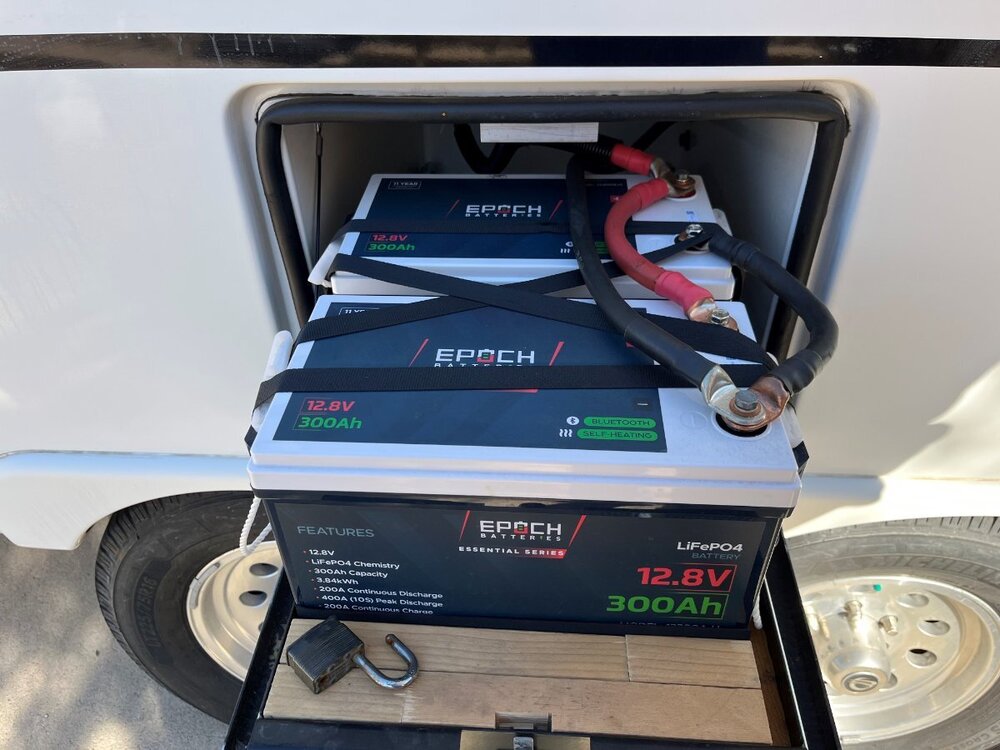

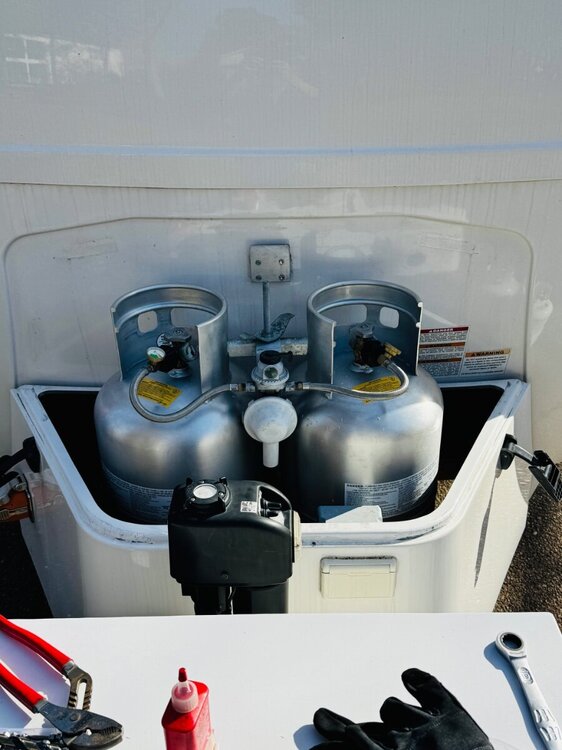
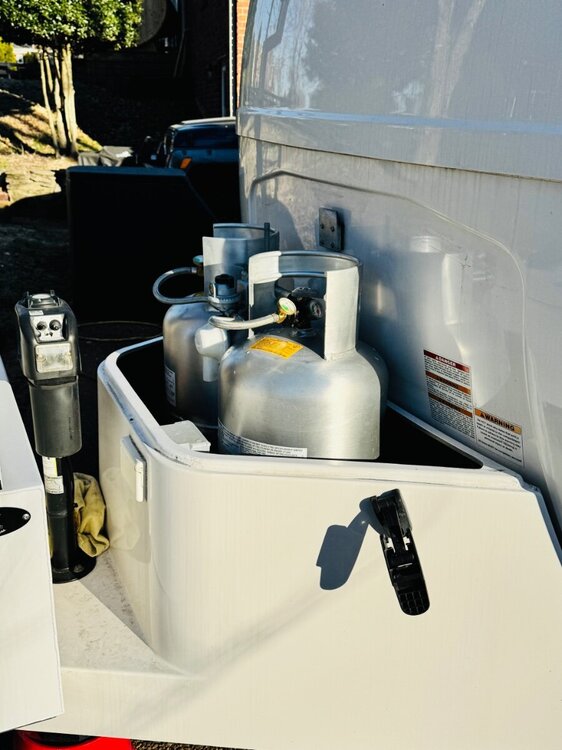
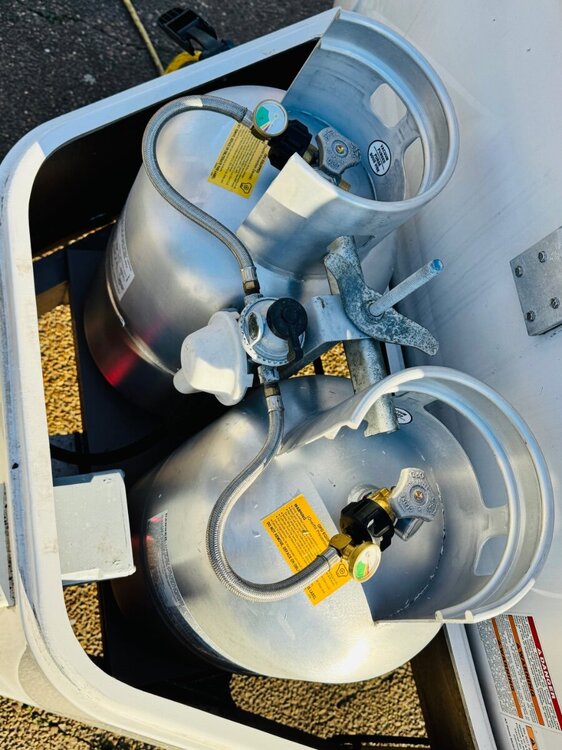
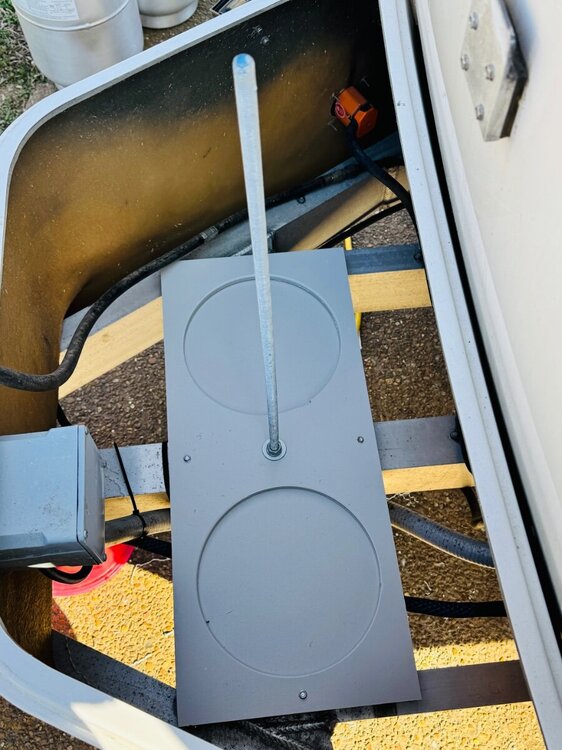
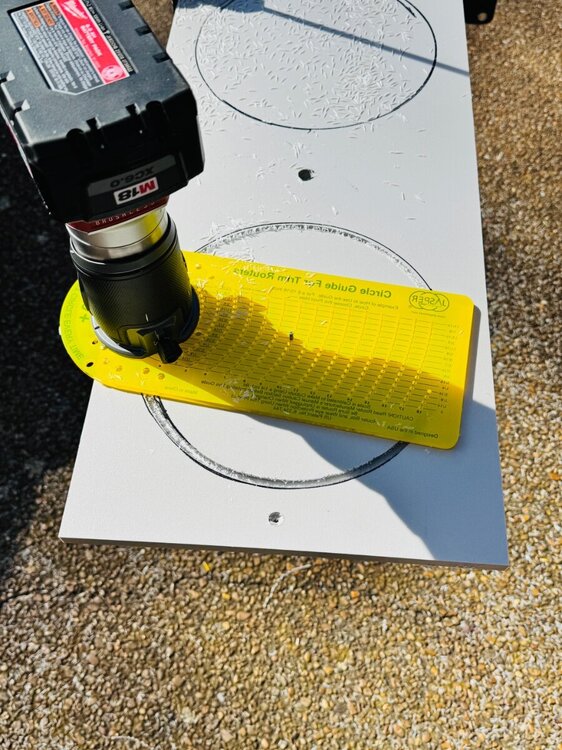
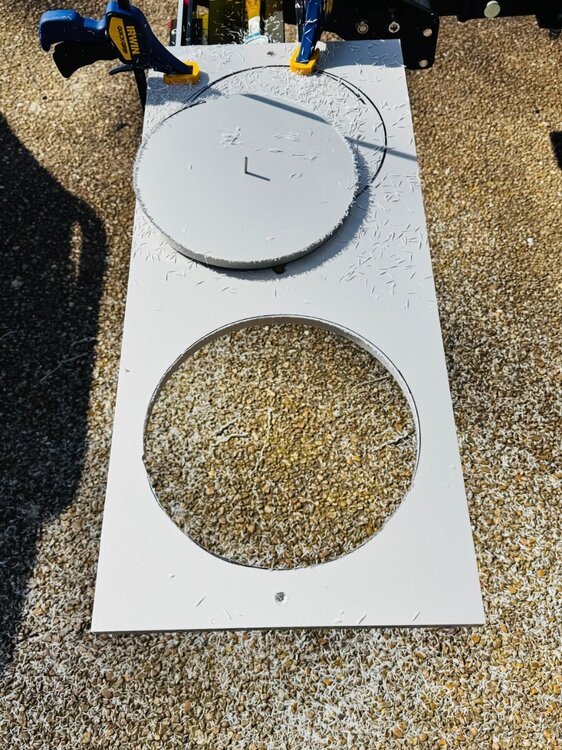
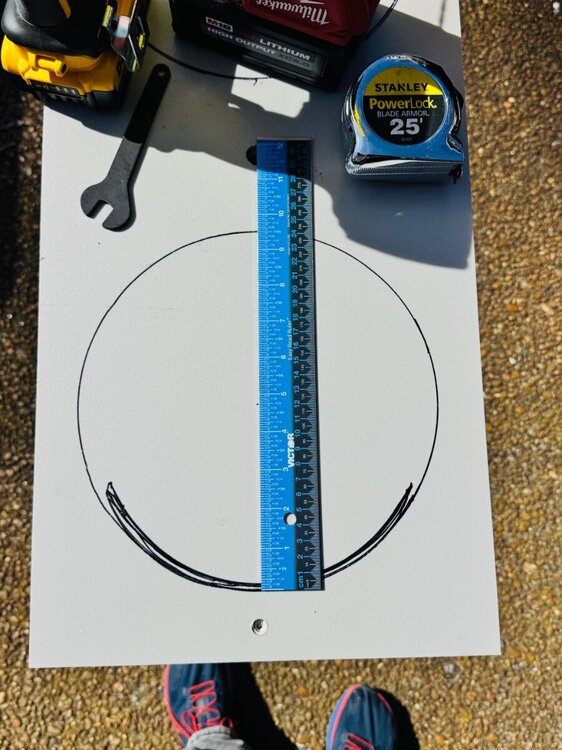
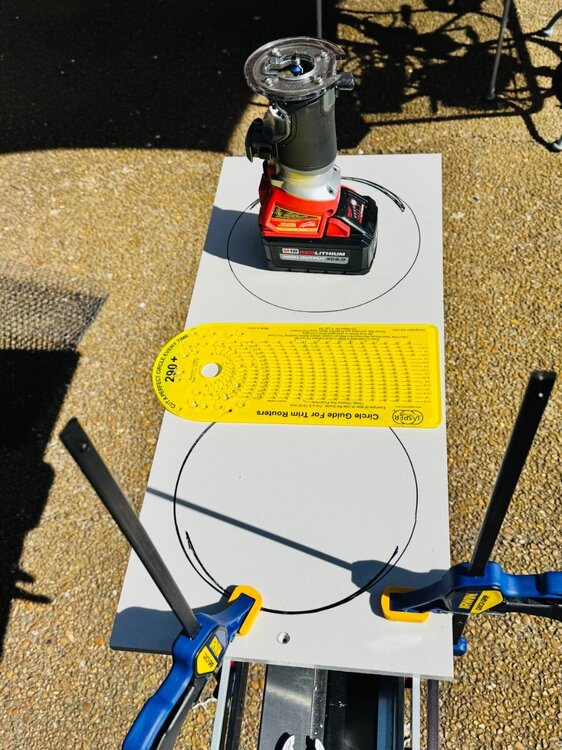
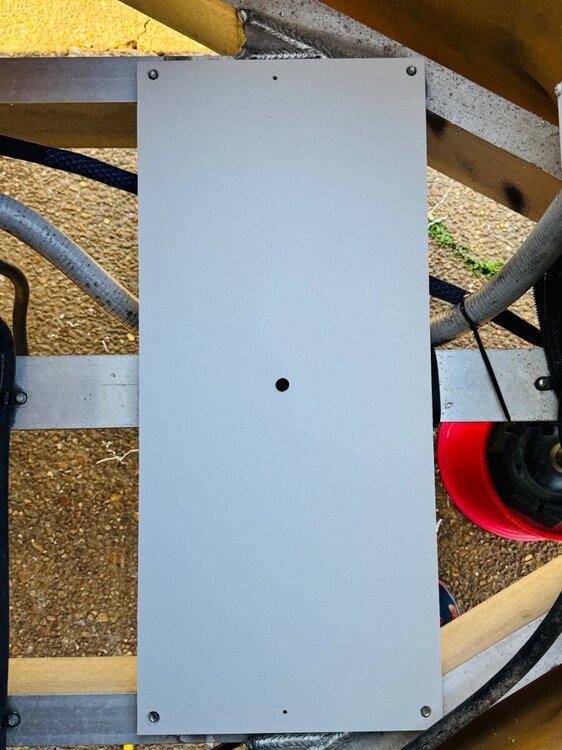
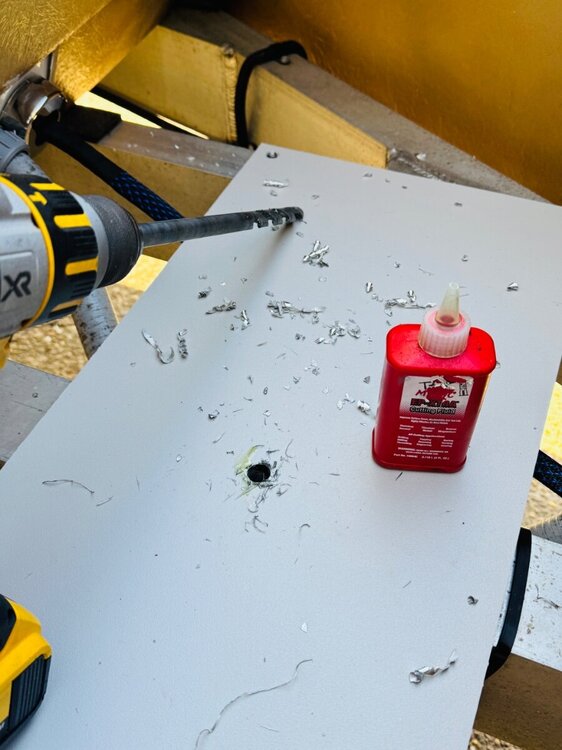
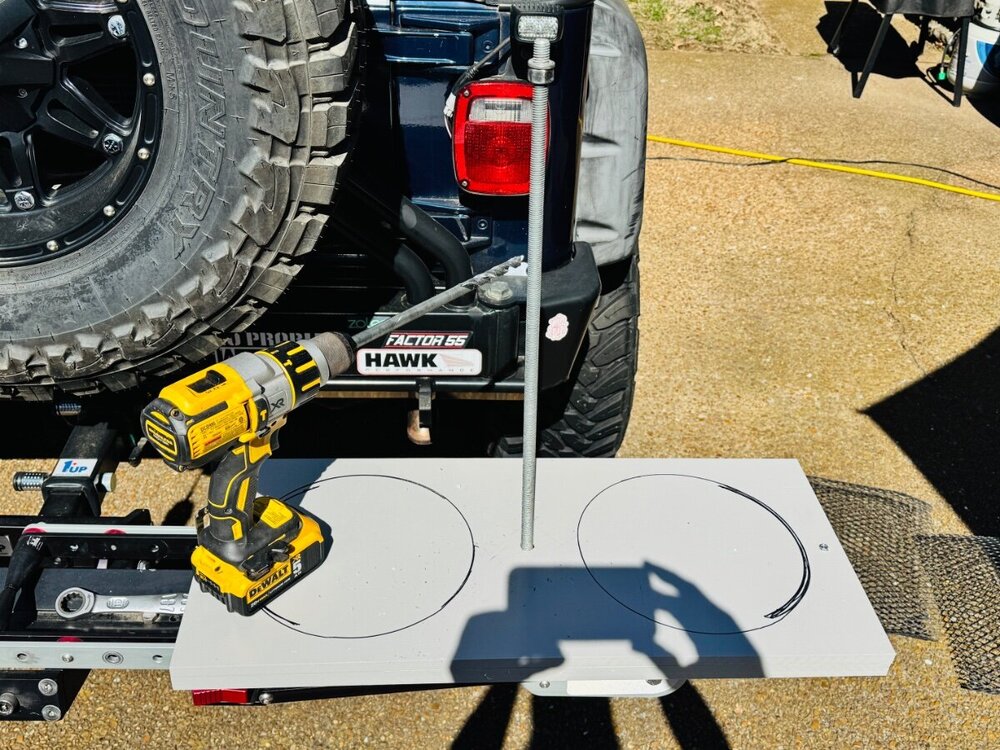
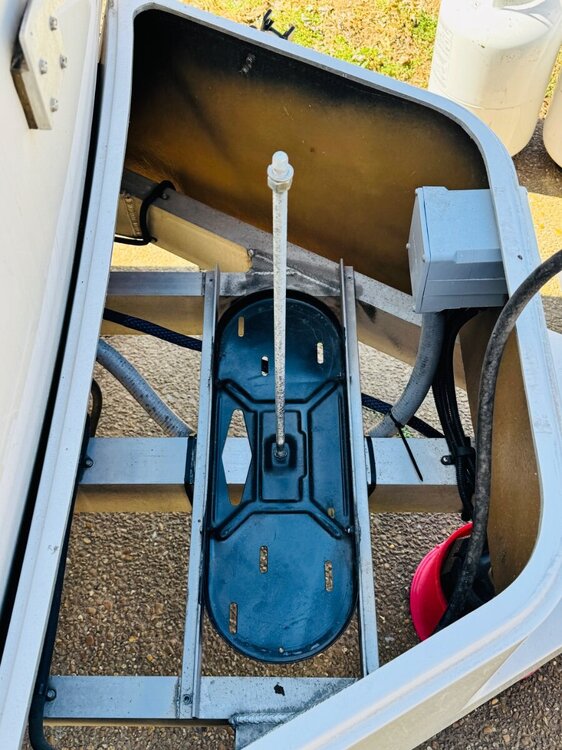
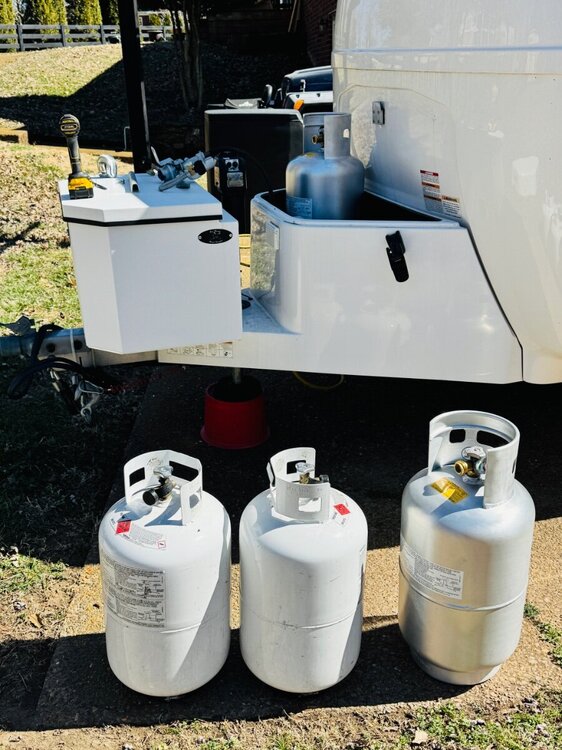
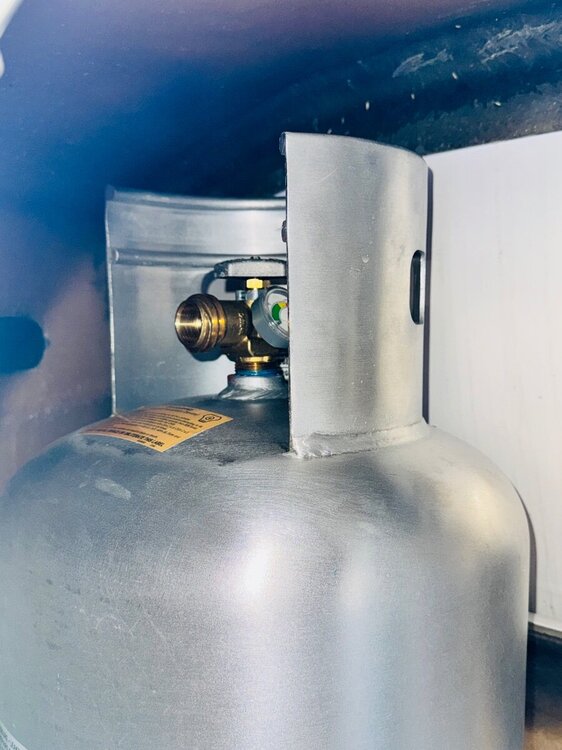
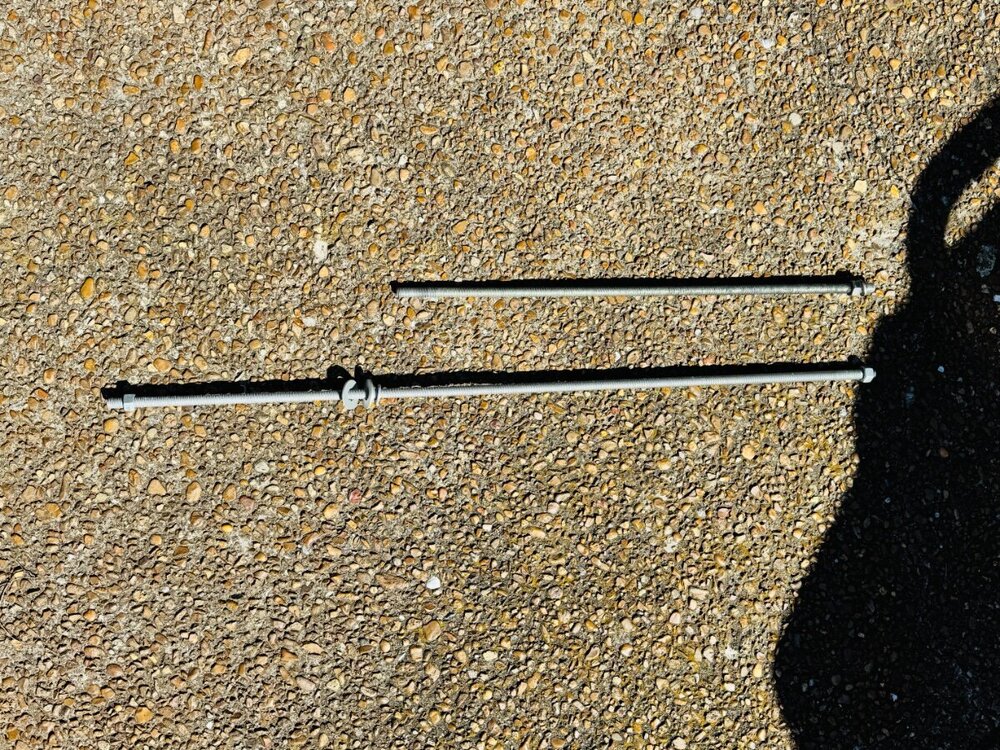
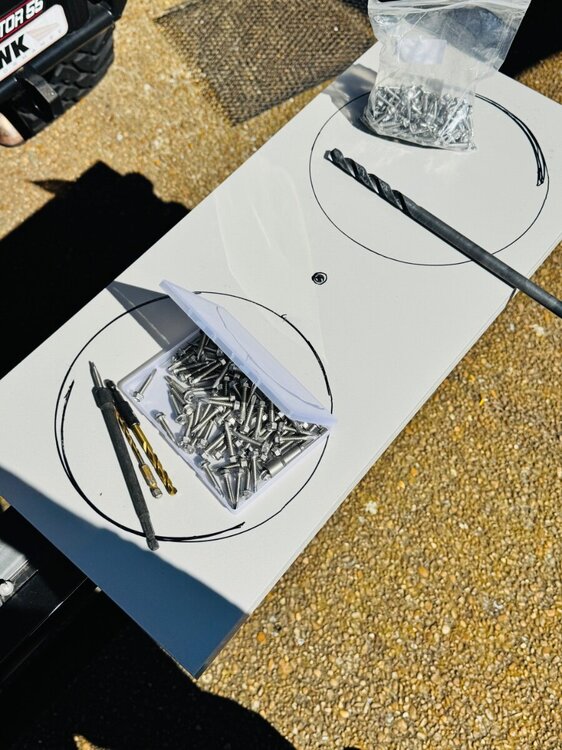

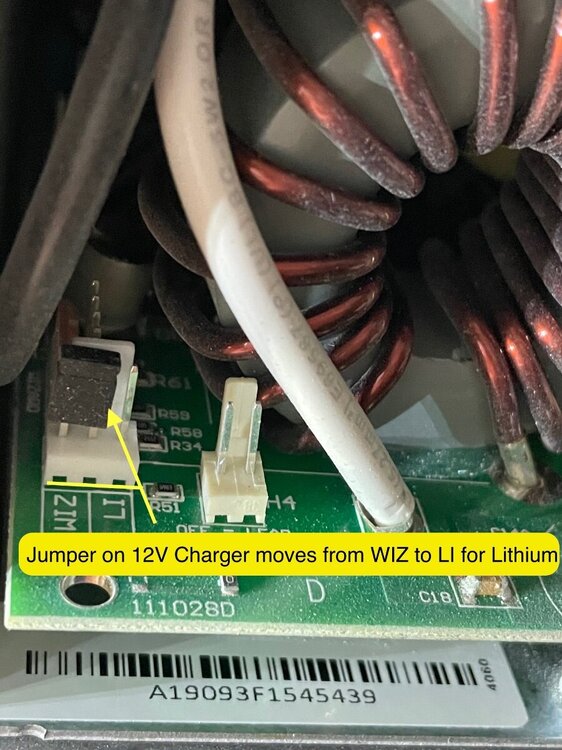




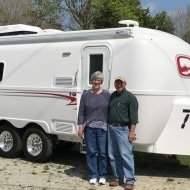
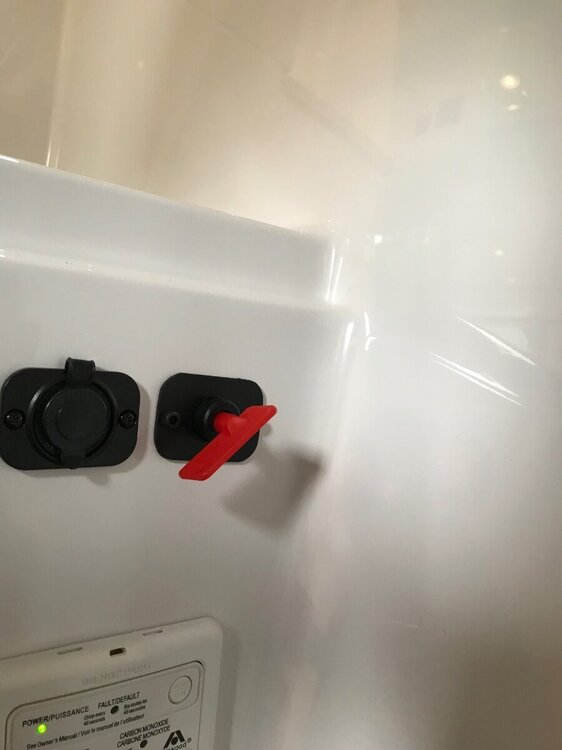

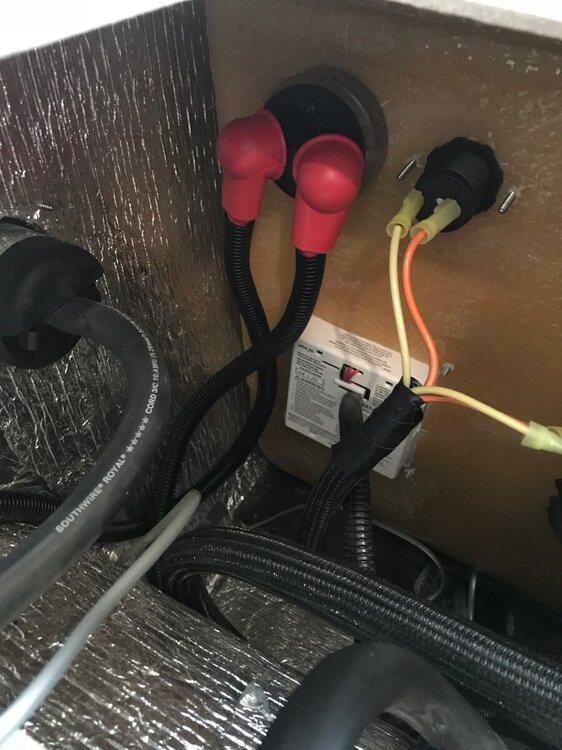
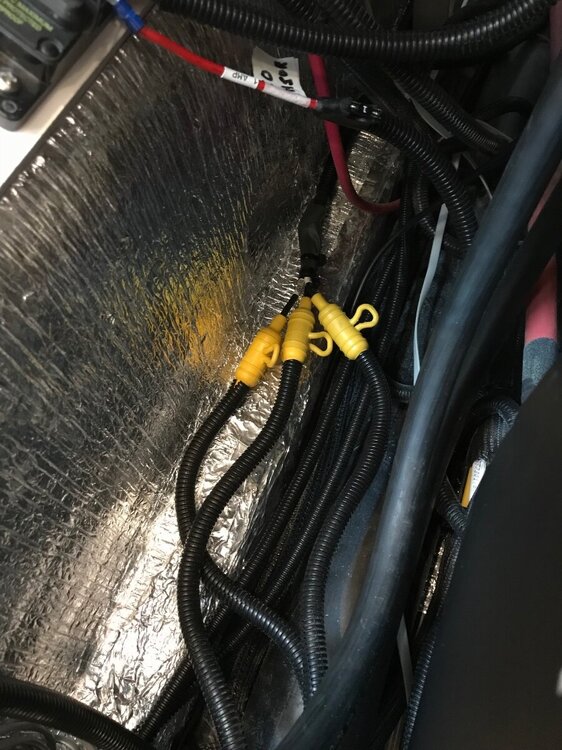


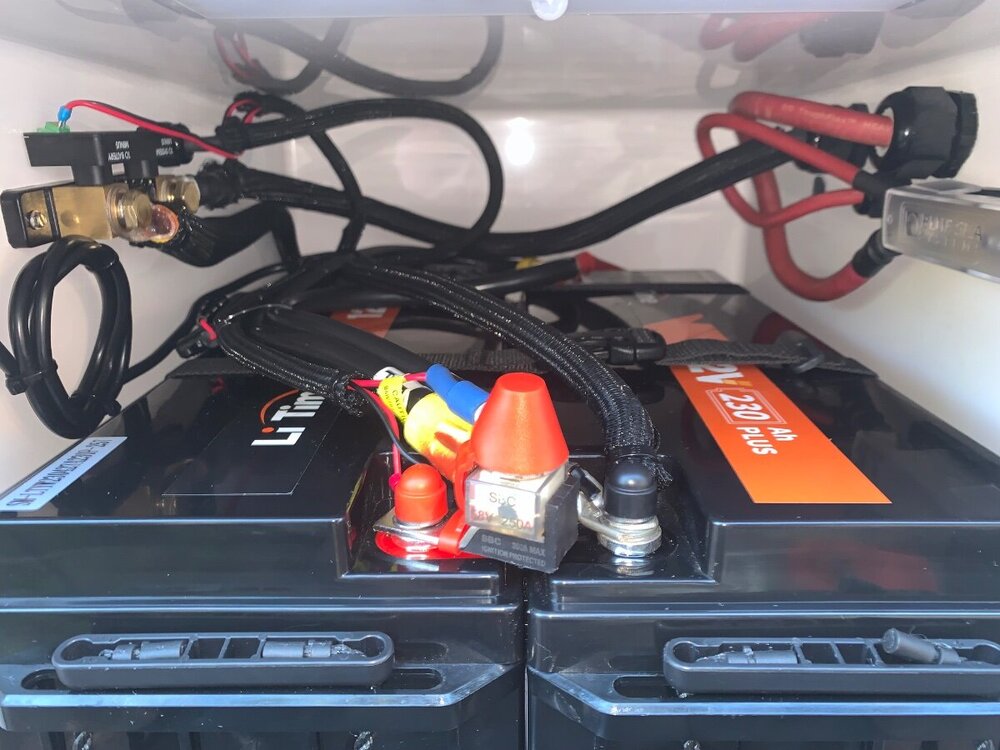

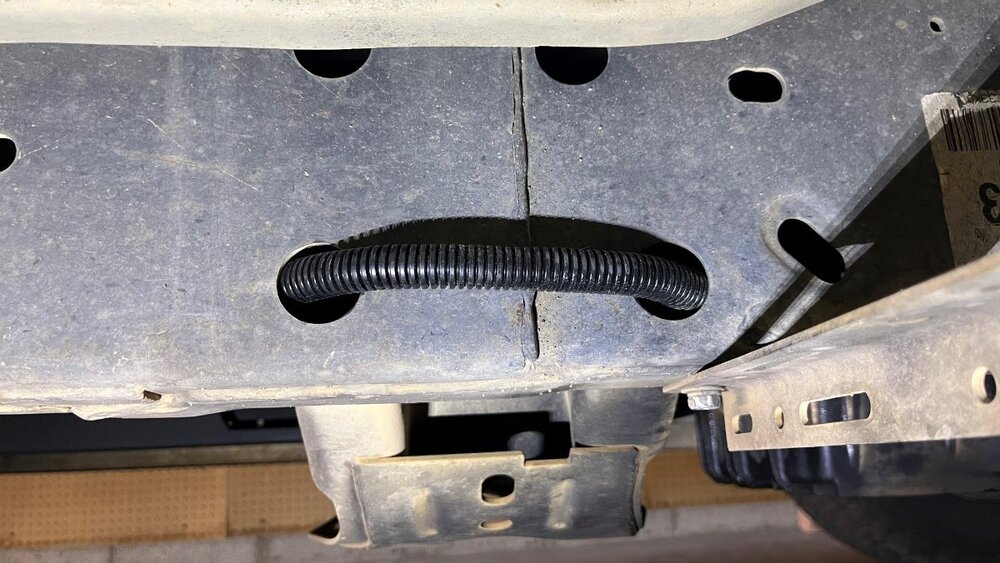
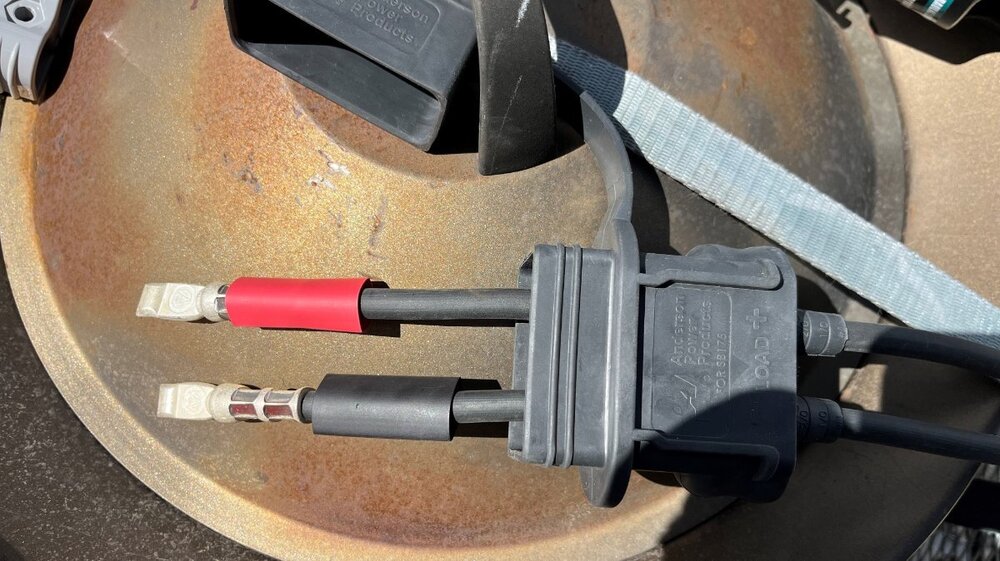
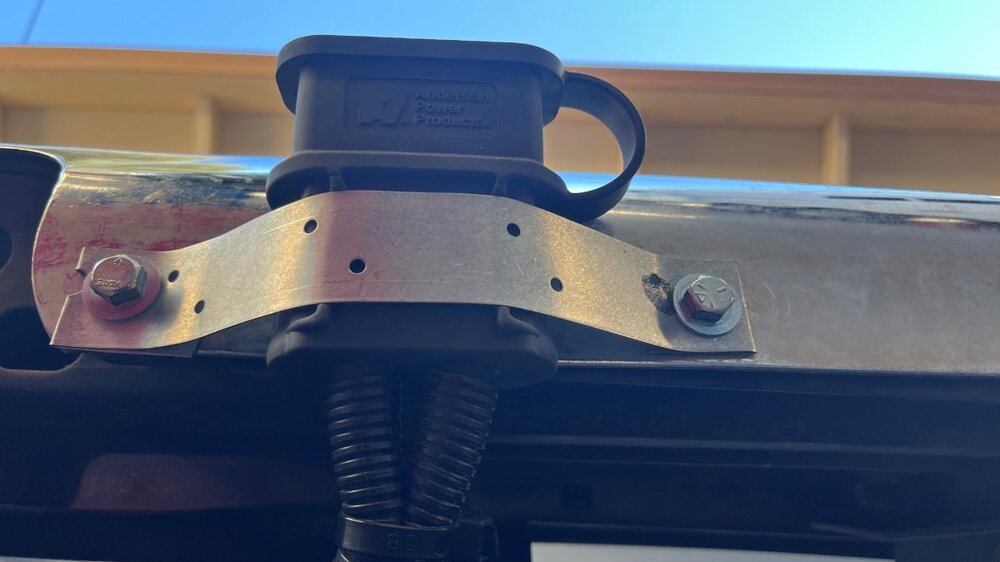
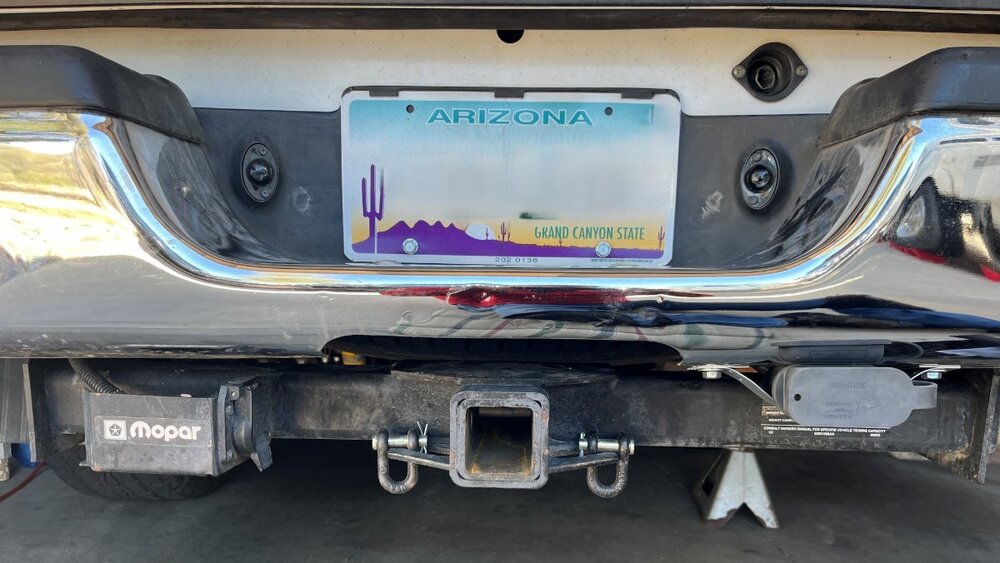




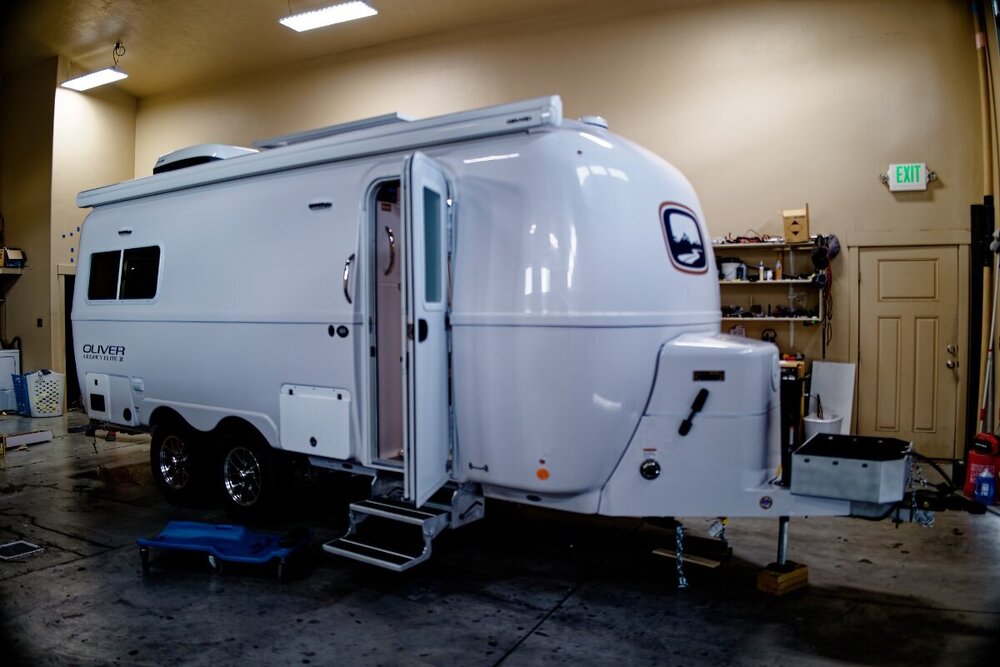

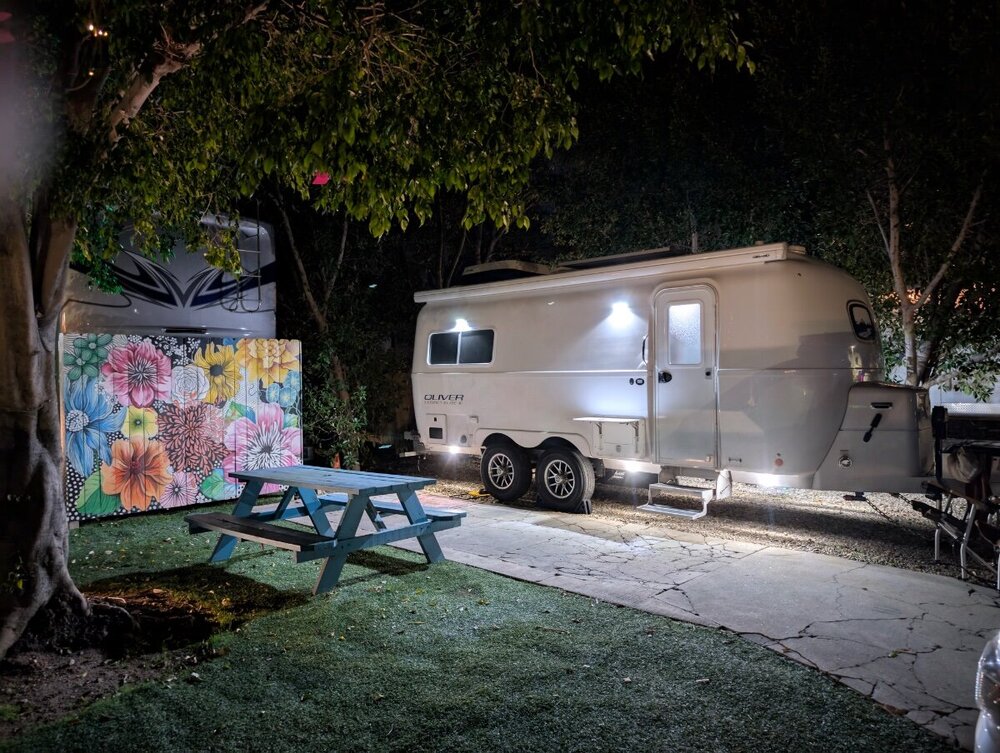
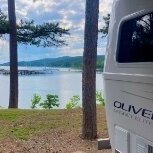

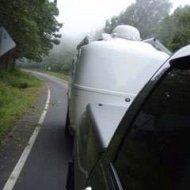
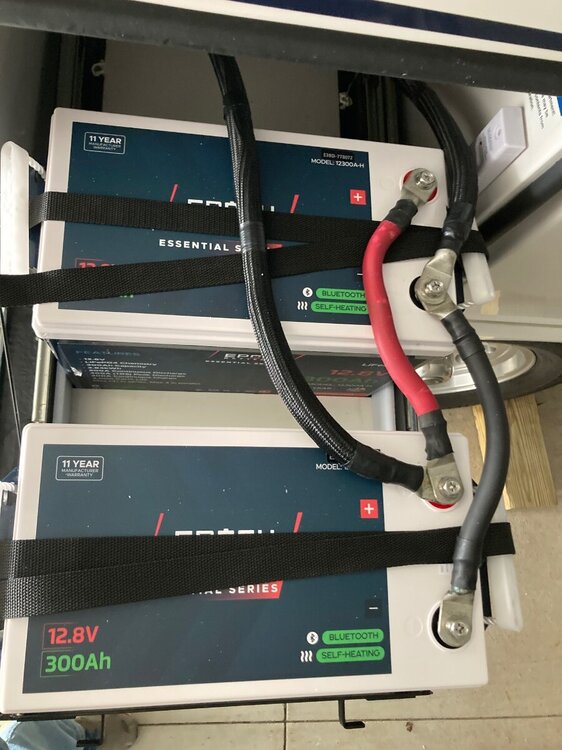
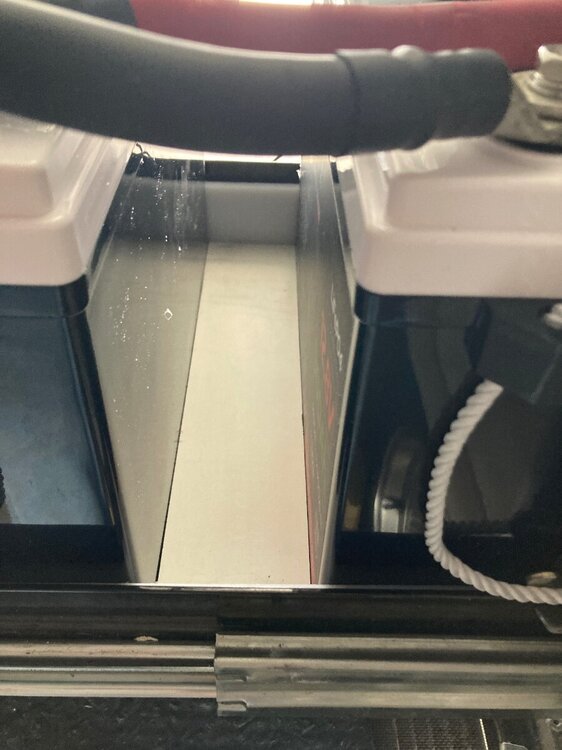

.thumb.jpg.e34bf01ef7f7d5e99ad31856d45afbeb.jpg)

